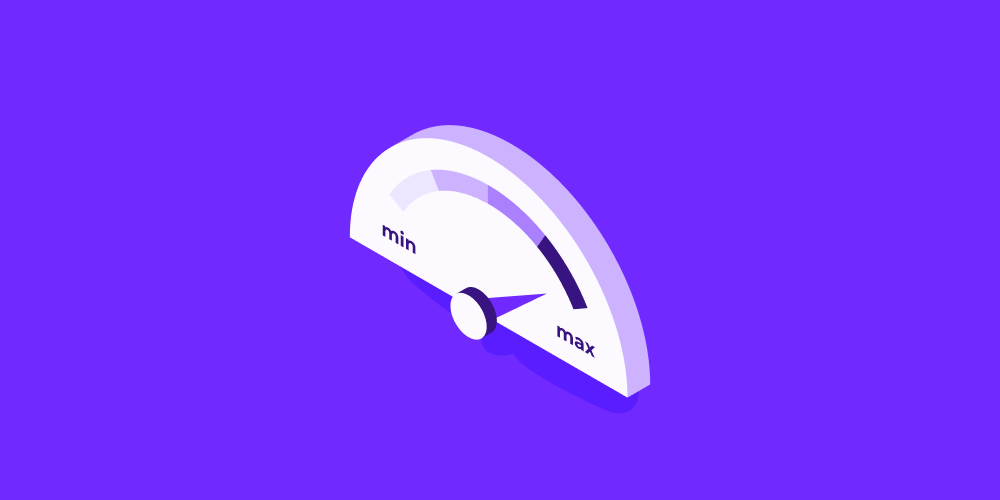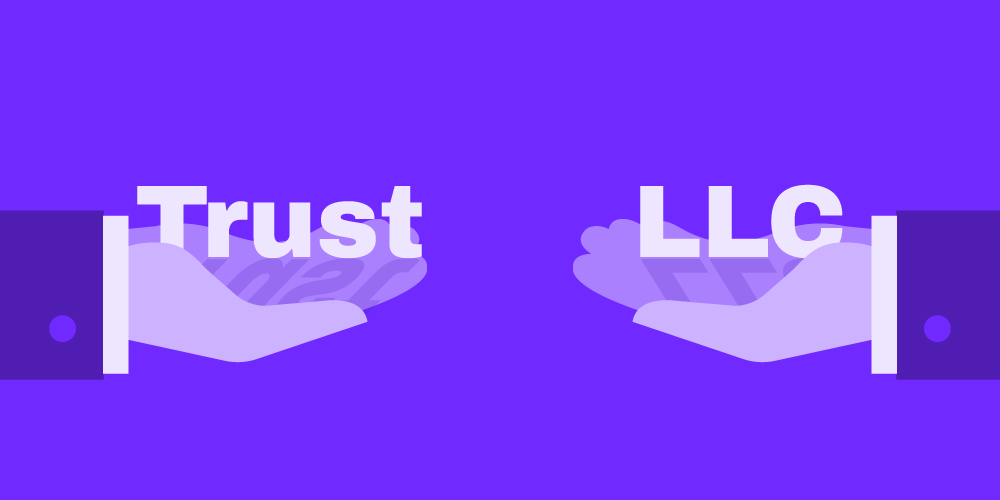How to Maximize Your Retirement Savings with a Self-Directed Solo 401(k)
If you’re self-employed, you understand both the freedom and responsibility that come with running your own business. You may also be eligible to...
16 min read
 Rocket Dollar
:
July 29 2019
Rocket Dollar
:
July 29 2019
A Roth IRA can be a powerful investment tool by itself, and adding in the self-directed benefit brings it to another level. Many people who had corporate-sponsored retirement plans are unaware of the benefits of opening or converting their accounts into a Self-Directed Roth IRA.
It’s important to note that even if you have a traditional IRA or a Self-Directed retirement account, you also can have a Self-Directed Roth IRA. You are also able to convert your traditional IRA into a Self-Directed Roth IRA. Tune into this webinar to get all the answers you need open to a Self-Directed Roth IRA and significantly impact your long-term retirement savings. Register for the webinar to maximize your retirement savings in the long run.
What's the Difference Between a Self-Directed Traditional IRA and a Self-Directed Roth IRA
So what's the difference between a traditional IRA and a Roth IRA? And so with a Roth, all your contributions grow tax-free. So there's a $6,000 limit on how much you can contribute into an IRA, whether it's Roth or traditional. But those Roth contributions have a separate tax and a special tax classification. So you put the money in now, it grows tax-free throughout your lifetime. And then should you wait until retirement age to withdraw it, or to take what they call distributions, you can take those distributions tax-free. So that can be a huge boon to your retirement, your retirement funding, and is generally a very important part of retirement planning and retirement strategies. And so remember you're funding this with post-tax dollars. So this is after you get your paycheck after the government takes FICA and social security and Medicare, and any state taxes. With the money that you have leftover, you can make those contributions to a Roth IRA.
And then a traditional IRA works a little differently. You put money into a traditional IRA and you get a tax deduction today, or this year when you go to file your individual tax return. And so it lowers your taxable income, saves you a little bit of money, and then when you go to take a distribution later in life, you pay taxes on those distributions. The distributions are called required minimum distributions, and there's a table which dictates how much you need to take out each year. So really the difference here is one of them saves you taxes now, and the other one saves you taxes in the long run. And then whether or not you should use one or the other, there are several ways to think through that. We'll cover some of them here.
We offer, at Rocket Dollar here, the self-directed IRAs, both traditional and Roth are all flavors of the IRA. But a self-directed IRA makes it easy for you to invest in alternatives such as real estate, startups, and precious metals. I mentioned precious metals because even just last week, hedge fund titan Ray Dalio is talking about gold, and talking about opportunities and investing in gold. So precious metals and gold may be making a comeback. I don't know if I'd call it a comeback yet, but it's interesting to see even some of the real thought leaders in finance are talking about gold again. And then, of course, most of our clients love real estate and startups.
So really if you go get a Roth IRA just about anywhere else, any of the big companies, typically you've got to buy stocks, bonds, and mutual funds, or that's what you invest in inside the account. And with ours, we make it easier for you to invest in anything, real estate, startups, precious metals, And again you could even do stocks and bonds. We can show you how to do that if that's what you want to do. Again, the Roth IRA was established by... It was the Taxpayer Relief Act of 1997, public law 105/34, and it was named, trivia question here, it was named for its chief legislative sponsor, Senator William Roth from Delaware. Cool. So that's sort of the history on it.
Contribution limits for a Self-Directed Roth IRA
The contribution limits for 2019, so 2019 contribution limits have gone up to $6,000. They were $5,500 last year. And then if you're over age 50 you can make something called a catch-up contribution for another $1,000, which gives you a total of $7,000 a year. And if you start thinking about the math over time of you putting $6,000 a year away into an account that you can withdraw from in retirement age with no taxes, the compounding is pretty powerful. This is, in general, this is a pretty easy way for most people to become a millionaire.
And what about my spouse? Well, it does not matter if your spouse contributes. You can, or you can both contribute, the full amount for which you qualify. This is their individual retirement account, so you want to zero in on that keyword Individual. So in a household, you and your spouse can both have Roth IRAs. And what are the qualifications for Roth IRA contribution in 2019? so you'll want to look at your household situation. You may want to consult a tax advisor or a CPA or an enrolled agent, but you're going to have to determine whether you're going to file single, or if you're married that you're going to file jointly or file separately. And then you want to take a look at your adjusted gross income. And then depending on what threshold your adjusted gross gross income falls in, that determines how much you can contribute. We'll look at some of the numbers on the next slide.
We've tried to simplify this here a little bit. So there is an income phase-out range, which for a single individual is above $137,000. So if you're making above that, you cannot just make a regular Roth IRA contribution. There is a technique though for still getting money into a Roth IRA, I'll talk about that later. But for most people, of course, most people their income is probably below that. And depending on, again, what range your income falls in, that determines how much you can contribute.
So single individuals, your range is from $122,000 to $137,000. Now in that range, you can still make some contribution, and depending on where you fall in that range, that determines how much you can contribute. And again, if you're above $137,000, you will not be able to contribute. And if you're below $122,000 you contribute all $6,000. and now if you're married and filing joint, which is the most common way in which Americans file tax returns, your range is $193,000 to $203,000 so if you're above $203,000, you're not eligible to make those contributions. If you're in that range, you can make a pro-rata or a portion of the $6,000 contribution. And if you're below $193,000 you can make the full contribution. So depending on your situation, that determines how much you can contribute. And again, talk to your tax advisor, but most of this information is out there on the web too and it's pretty easy to sort through.
The Five-Year Withdrawal Rule
So what's the five-year withdrawal rule? You might've heard about this. This is an important feature of the Roth. So the five-year rule allows you to withdraw your investment earnings or even the funds that you have converted to Roth from another tax status, without penalty if you keep the earnings in an account for at least five years after a contribution. So to make this simple, let's say I make a contribution this year, it's 2019, as long as I hold those funds in my Roth IRA for five years, and it starts with January 1st of this year, even if I make the contribution in December, I can withdraw those funds after five years without a penalty. And that's an important feature of the Roth IRA. It gives you access to the funds if you need them later on.
So some additional information on the five-year rule. What should I keep in mind? I mentioned this already. The five-year rule begins on the January 1st of the calendar year where you make your contributions. It's not when you open the account, it's when you make your contributions, and it's any Roth. And then again after that, you can withdraw your earnings in the form of distribution, tax-free, as long as you've held on for five years. You can always withdraw your contributions at any time. So if I put $6,000 in this year, I can take that 6,000 out at any time. It's the earnings that need to be held there for five years.
And if I withdraw them early, I could incur a tax penalty. So this is an important piece too. You want to do some planning here and make sure that you're not going to need the money that you're contributing to the IRA. So what I typically recommend at the household budget level is you plan to make your investment, rather your retirement in your investment contributions to your different retirement accounts or investment accounts, depending on your strategy, and that you do your spending in your planning after you've already planned for your investments in your retirement accounts. Otherwise, you might get hit with these penalties if you have to start taking the money out early.
Can I do this for, my Roth dollars that are in my Solo 401(k)? There are some interesting places where the IRA and the Solo 401(k) interact with one another. So yeah, you can do the same thing with a solo 401(k). So if you're putting money into the Roth bucket inside your Solo 401(k) and you need to take the money out, you can do that in this as long as you've held on for five years. So what you do need to make sure is that your 401(k) plan allows for something called an in-service distribution. And you can do that by looking at your plan documents.
If you're a Rocket Dollar customer, you can rest easy because all of our plans allow for in-service distributions, but if your provider is somebody else you may want to take a look at your plan document and just do a search in your pdf for in-service distribution and see whether or not your plan allows for these. And remember the five-year rule does not carry over to a new Roth IRA. So if you open a new Roth, rollovers will be subject to the same waiting period. Okay, that's a good thing to know, especially if you also have both products with us.
Converting to a Self-Directed Roth IRA
A conversion is, let's say somebody was putting money into a traditional IRA for 10 years before the Roth IRA even existed. The legislation allows for you to convert your traditional IRA funds or even pre-tax Solo 401(k) contributions to a Roth. And so when you do that, that's called a conversion. So you're taking pre-tax dollars and now making them Roth dollars, which means the government wants its taxes, so you're going to have to pay your taxes. And the way you do that is you call your IRA provider, you fill out some forms, and then the IRA provider moves funds from the traditional to the Roth. And then we'll send in a 1099 for you to report the taxable income and then start the clock ticking on the five-year rule for the Roth IRA, which is what we just covered in the previous slide. Great. So this is the specifics here and we'll send the slides out afterward.
A couple of other things about the conversion. Looking at this most recent tax bill, the Tax Cuts and Jobs Act. Tax rates are still at a relatively historic level, especially if you're a small business owner, which I have a slide on here at the end. So this is a great strategy. Many, many successful retirement investors have a strategy that includes piling up as many Roth dollars as possible. So if that's your strategy, this is something worth doing.
All right, how could we do this at Rocket Dollar if you have accounts with us? This is a nice graphic depiction of how it plays out. So, again, you put money into a traditional IRA account, and then you convert the account to a Roth IRA, and then you'll pay taxes on what was in the traditional IRA. Would show up on your tax return in the year in which you did the conversion, so if you did it this year it would show up this year. And then the rest of the funds would go into your new Roth IRA. You could do this with Rocket Dollar and these would be self-directed traditional IRAs and a self-directed Roth IRA.
The Backdoor Roth Technique
And now a couple of interesting techniques. So this is one of my favorites. This is the backdoor Roth IRA. So what is a backdoor Roth IRA? Well, it's a technique for high-income earners or people who are outside that range where they're eligible to make an IRA contribution, to put $6,000 into a Roth IRA. And the technique is pretty simple. You open and you fully fund a traditional IRA, and the limit this year $6,000, and this is actually with the IRS calls a non-deductible IRA contribution. Again, remember your income's too high to make a deductible contribution, so you make a non-deductible contribution. And then the best way to do this, or the smoothest way to do it, is you put it into this traditional IRA, let it sit in cash and wait a day. And then the following day you convert that traditional IRA to a Roth IRA. So you do a conversion.
You don't have to wait a day. I recommend you wait a day though. Or you can do it at any time once the contribution has been made. You might forget about it, and if you do forget I get about it you can come back and do the conversion later. But a good technique here, and a clean way to do as to wait a day and then make your conversion. And then you may owe taxes on any gains if you do wait, which is why I always recommend that people do these right away. And there's a form that you have to fill out with this, it's at the bottom of the slide, IRS form 8606 for nondeductible IRA contributions. You'll have to do a little bit of work on that form, and if you invested the money in the traditional IRA before you did a conversion and it made some gains, you might owe tax on those gains.
That's why I tell you to throw it in cash, leave it there for a day and then make your conversion. It'll keep this process as easy as possible. A couple of other things you'll need to know here. If you already have traditional IRAs, or SEPs, or a SIMPLE, which is another type of IRA, with assets in it or with investments in them, you'll need to convert those to a Roth before you can start the non-deductible contributions. This is called the pro-rata rule. And so this is a really important thing to pay attention to. And most people that screw up a backdoor Roth screw it up right here because they've got some other account out there that they forgot about. And the IRS very well may recognize and see that.
So something else to note, you could also transfer those accounts to a solo 401(k) from Rocket Dollar. I had to do this. So we had an old traditional IRA before I started doing the backdoor, I had to take a traditional IRA and find a place to put it. So I rolled it over into my Rocket Dollar Solo 401(k). So the Rocket Dollar Solo 401(k) plans allow for rollovers and transfers from any qualified plan or an IRA. So that's one interesting technique here. It's another place where the 401(k) comes in to bolster the IRA. And so again, the way to talk through that, we had an IRA balance that needed to get zeroed out before we were eligible to do the backdoor. So I rolled over the IRA to a self-directed Solo 401(k) from Rocket Dollar. Now my traditional IRA balance was zero I can now go do the backdoor Roth IRA. That's how those things play out and work together.
And then also what's cool about this is both you and your spouse can do this. So if you're both high-income earners, this is a nice way to get $12,000 a year into Roth IRAs, and again, you get all the benefits of having a Roth IRA. So that account will continue to grow throughout your lifetime, and then in retirement age, you can pull it out and take tax-free distributions. You can also if you have a family, or you're doing estate planning, you can pass on Roth IRAs to your children and your children will pay no taxes. This is a technique called the Stretch IRA, which is, there's some legislation, or there's some debate happening about whether or not Congress wants us to continue to be able to do this. However, as of today, it's something that you still can do. If you want more information on that, feel free to email me.
So how much can I contribute to my Roth Solo 401(k)? This is another interesting way in which the accounts work together. You can contribute both traditional and Roth dollars in the same plan and the same year. So one way in which this might work is you make pre-tax contributions to a Rocket dollar self-directed 401(k). Or, if you don't necessarily want the tax deduction, and you like the idea or you believe in a strategy of having as many Roth dollars as possible, you could make your contributions to a Roth 401(k). And you'd be able to put $19,000, assuming you have that much income, into your Rocket Dollar self-directed Roth Solo 401(k).
Mega Roth Technique
Okay, the Mega Roth. And here's another strategy. So this is, again, a Solo 401(k) plus an IRA. So the Mega Roth is a strategy to put as many Roth dollars as possible into your self-directed Solo 401(k). I sometimes will see people refer to this online, they are in different forums, as a loophole, and I disagree. This is not a loophole, this is a feature. So the IRS, in notice 2014-54 discusses this feature of 401(k)s. Now, it is a technique at the IRS has signed off on or communicated to the public with, that they have no problem with it. I call that a feature of these 401(k) plans and the Rocket Dollar self-directed Solo 401(k) is fully set up to allow for this type of strategy.
And so here's how it works. The self-directed Solo 401(k) account holder, so that would be me with my side business, or any one of our account holders that has a self-directed solo 401(k), would open another account for their Solo 401(k) for after-tax contributions. You would make those after-tax contributions and then you convert those to a Roth just like you would in the backdoor IRA that we just talked about. This is an important point here, and this is where people make a mistake with the Mega Roth strategy, is that they don't seem to understand that there are several different types of buckets of money inside a 401(k).
There are three types of money in a 401(k), they have different tax statuses or different tax consequences. There's pre-tax, which is where you would get a tax deduction, and you would take that on your individual tax return. There are Roth dollars, which is you put the money in now, you don't get a tax deduction now, but you can take it out tax-free later. And then there's after-tax. And so after-tax dollars is no different than me going and opening a brokerage account at Schwab with the money I have leftover at the end of the year. After-tax accounts, or after-tax dollars, pay taxes on any income gains or any distributions from your investments. They're typically taxed at short capital gains or long-term capital gains, depending on how long you hold on to them.
So again, those are three different buckets with three different sets of tax consequences. And where people get confused is they mistake the Roth and the after-tax dollars as being the same thing. And I understand why that happens because if you think about it, you contribute to a Roth with after-tax dollars. But Roth has separate tax consequences whereas this after-tax bucket does not. And, in the public law, or in the law that makes this thing possible, there's something called the 415(c)(1)(A) limit. So that's just the maximum contribution that you can make to a 401(k), pretty simple. That's the $56,000 number in 2019, which is up from 2018, and if you're over age 50 you get a $6,000 catch-up contribution which would take you to $62,000. So if you wanted to, you could put $62,000, if you're above age 50 and you have enough self-employed income into an after-tax 401(k) bucket, and then immediately convert it to a Roth. And so if you think about this, this is now a powerful technique for getting $62,000 into a Roth. It could be a Roth 401(k) or you could even send it out to your IRA and send it out to a Roth IRA. So that's extraordinarily powerful.
So to streamline that, again, you could do that right into a Roth IRA. So now, with Rocket Dollar, of course, our IRAs allow you to do self-directed investments. So we've now just shown you a path to put $62,000, if you're above age 50, or $56,000 if you're in your thirties, or anybody under age 50, and then turn all of those $62,000 into investments in alternative assets. And so if you're a real estate investor or a startup investor or somebody with some expertise in any of these alternatives, this is a wildly powerful strategy. You can see here on the slide I refer to this as the secret weapon of personal financial planning. And this is partly why.
Any converted amount in any gains need to be reported to the IRS with a 1099, and there's a specific distribution code that has to go on that 1099, so we do those for our clients. If you have an account with us, if you're thinking about doing this, give us a call, I'll walk you through how to do it. And then hopefully you get the benefit of that over the long haul. So imagine doing this now for three, four, five years, even 10 years if you're a business owner, you could potentially have well over $600,000 in Roth dollars in just contributions. And that's if you make no money with your investments. So this is, again, this is pretty wildly powerful.
Business Owners and S-Corps
And then for those of you that are business owners and have an S-Corp, so real quick, I'll define what an S-Corp is. So an S-Corp is not an entity type, it's a tax election. So let's say you have a limited liability company or another type of an entity structure, you can elect to be taxed as an S-Corp. And people do this because it saves them on self-employment tax. Well, the Tax Cuts and Jobs Act, this year there's the tax bill passed by the administration under President Trump, created a qualified business income deduction of up to 20%, and that's applied to many S-Corps. LLCs that are filing as S-Corps often qualify, and for self-employed people, it gives you, if you're self-employed, a way to compete with big companies who have a corporate tax rate of only 20% now. So this created the same tax rate for all businesses, whether you're a big, big conglomerate or a big corporation or just a one-person shop hanging up a shingle working out of a WeWork office. And so, as an S-Corp, you can sponsor your own 401(k) plan with Rocket Dollar, via Rocket Dollar's self-directed Solo 401(k).
And then if you have your own Roth IRA, now we can put all these things together and come up with a cool strategy. So the S-Corp owner makes your employee contribution into your Solo 401(k), and you could skip the employer contribution because you're still going to get a tax deduction via the qualified business income. This is going to show up on your tax return instead of on the corporate return. Then you can go and maximize the after-tax contribution to the Solo K, convert it to your Roth IRA via the Mega Roth strategy, and now we've done the same thing for a business owner. So we've now shown that business owner how to put, depending on your age, anywhere from $56,000 to $62,000 into a retirement account. It's a retirement account that allows you to invest in alternatives, and at the same time, you're still getting the qualified business income deduction that came out of the new Tax Cuts and Jobs Act.
How Rocket Dollar Can Help
So this is a fun thing for me to talk about. I like being able to put all these different pieces together and see how they all play out and how they help you save money, and build a better future. So that is the S-Corp strategy with the Solo K and a Roth IRA. Again, if you want more information on that, feel free to contact me.
I'll tell you a little bit more about Rocket Dollar. So our focus here is on building a product and a service that allows people to very easily manage these self-directed retirement accounts. We do that with automated bank account creation. You can e-sign all your documents, there's no more printing, signing, faxing and scanning, all that goes out the window. You don't have to do any of that anymore. We will create a limited liability company for your IRA if you'd like the IRA LLC. If you're using a 401(k), we'll create a trust for you. We manage all the documentation, we push it out to you through a dashboard. This is the modern way to manage a self-directed account.

If you’re self-employed, you understand both the freedom and responsibility that come with running your own business. You may also be eligible to...

In today’s investing landscape, many individuals are asking the question: What are the benefits of investing in alternative assets? As traditional...

Alternative asset investment is no longer reserved for hedge funds and institutional players. Thanks to platforms like Rocket Dollar, everyday...

3 min read
When setting up a Self-Directed IRA, investors often seek “checkbook control”—the ability to make investments quickly without waiting on a custodian...

Rocket Dollar provides customers unparalleled access to a wide range of alternative investments, from real estate to private equity to...

When planning for your retirement, one of the key decisions you'll face is choosing the right type of Individual Retirement Account (IRA) to suit...